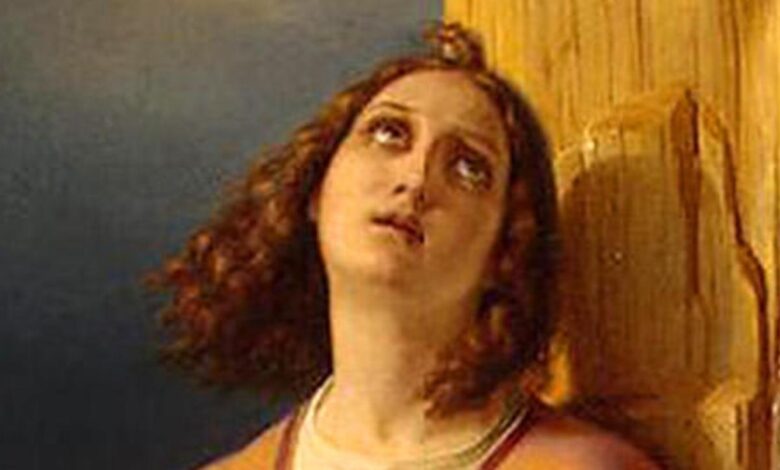In a London drama, Joan of Arc emerges as a transgender icon.

Joan of Arc has been reimagined in a new London drama as a non-binary icon who rejects feminine identity while struggling to find a home in a man's society.
I, Joan had not yet been presented at Shakespeare's Globe Theatre in August when Time Out magazine dubbed it “the year's most controversial drama.”
The initial photographs of Joan with her breasts tied were sufficient to ignite social networks.
In Britain, not a month goes by without a fight about gender identity, and this performance has given all sides of the issue new ammo.
Charlie Josephine penned the play on France's patron saint, the'maid of Orleans,' who repelled the English during the Hundred Years War in the 15th century. Isobel Thom portrayed Joan.
Josephine and Thom were both born female but identify as non-binary. The production of the play in the historic theatre on the South Bank of the River Thames is thoroughly modern, and no period costumes are used.
A black actress portrays the wife of the monarch's eldest son or dauphin, later king Charles VII. The battle scenes feature contemporary choreography.
From meeting the dauphin and waging wars to being tried and burned at the stake in 1431, Joan's narrative is still repeated.
The question of gender permeates the text.
“To be born a woman yet not be a woman. Why did you place me in this body, God? ” Joan asks at one point while wearing men's clothing and sporting short hair.
Joan dislikes the gowns that others anticipate them to wear.
“I am not female. “I do not fit the definition,” she says. One of her pals says, “Perhaps your term has not yet been coined? ”
Her allies then advise she employ the term “them,” which elicits roaring applause from the audience. Opponents in the play refer to her as “she.”
At Joan's trial for heresy, the judges repeat one sentence: “Do you believe it is wise to wear men's attire? Even if it is unlawful? ”
“Why are you so terrified?
” Joan responds with laughter.
“I am not female. I am a fighter.”
Controversy
The representation is opposed by feminists such as Heather Binning, founder of the UK-wide Women's Rights Network.
“She endured what she endured because she was female. “You cannot alter that,” she stated.
“This lobbying group is appropriating all of our historically influential women. This philosophy is offensive to women. Since history was written by men for men, there are many women about whom we know little.
Josephine and Thomas, though, defended the play.
Josephine said in The Guardian, “I forgot I had blasphemed a saint.”
Thom asserted on Twitter, “No one will steal historical Joan away from you.” “No one is going to take away your Joan, whatever Joan may mean to you… This presentation is art: it's an inquiry and an exercise in imagination.”
Shakespeare's Globe adopted the same strategy, comparing the interpretation of I, Joan to that of the renowned English playwright.
“Shakespeare's plays are not historically accurate. It stated that he used historical people to inquire about the world around him.
“Our contemporary authors are no different. Numerous and exemplary depictions of Joan as a lady have been preserved throughout history. This performance just presents the prospect of an alternative viewpoint. This is the purpose of theatre: to pose the question, “What if? ’”
Zeitgeist
Joan's life is likewise being reexamined through a modern light in her native France.
Valerie Toureille, a university professor specialising in the Hundred Years War and author of a 2020 book about Joan, stated, “It's the Zeitgeist.”
“It does not surprise me. There are ladies who have chosen a route apart from both men and women. So it is with Joan of Arc,” she added.
When asked why she wore men's clothing, Joan responded, “It was for protection from rape, and it's far simpler to ride a horse as a man than as an Amazon.”
Nonetheless, for Toureille, the primary point at the heresy trial was Joan's male attire.
This is evidence that supports the religious argument. For Church men, Joan in these garments transcended her role as a woman.”





